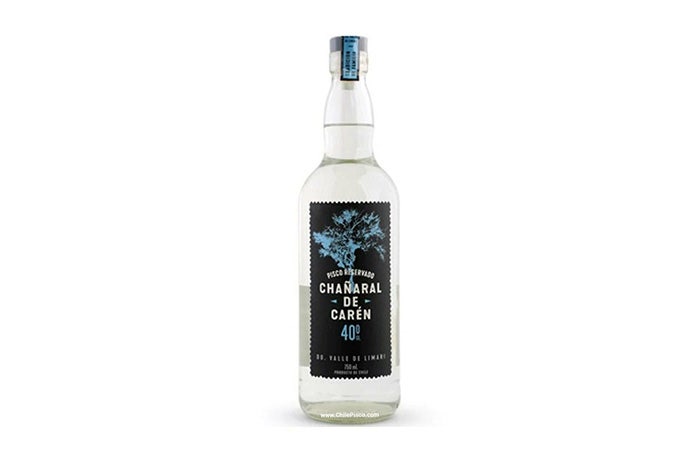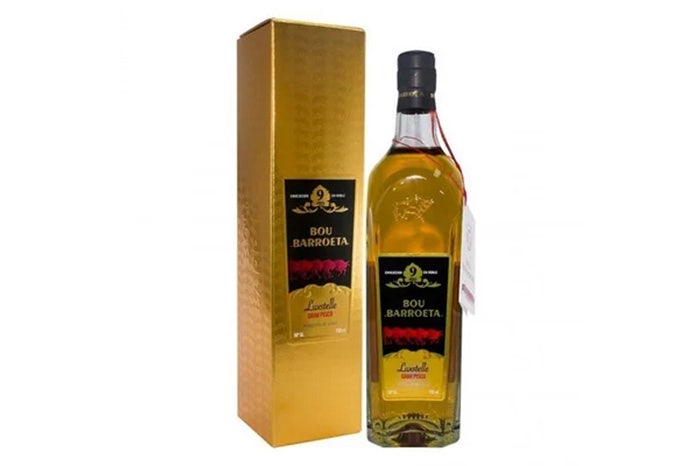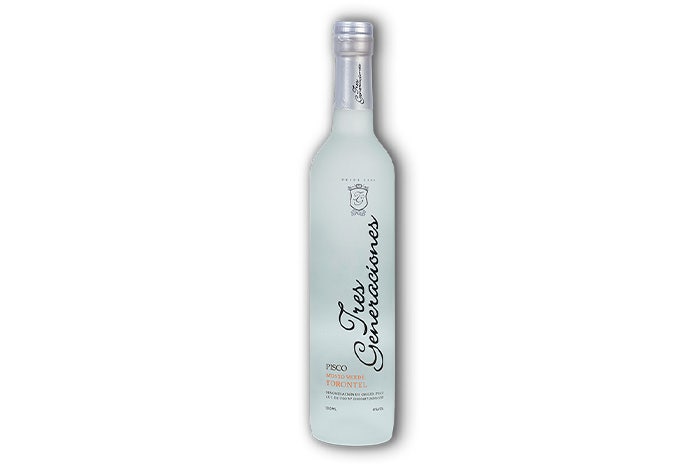A Beginner’s Guide to Pisco
Most people who travel to Chile or Peru are told, “You have to try the pisco sour—it’s our drink!” But the sour can hide a multitude of sins characteristic of cheap pisco. If you really want to understand the spirit—and know if you’re drinking the good stuff—you must try it neat. Like any fermented beverage, pisco quality and taste can vary and depends on the grape used, the terroir of its ingredients and the aging method.
Inhabitants of the land that is now Peru and Chile have consumed fermented drinks since the time of the Incas, and pisco, in particular, is a huge part of local history and culture. Pisco is more than just a cocktail ingredient, it’s also a source of national pride and conflict for the two nations. Peru and Chile both claim to be the originator and even battle over the name. Today, the two countries produce versions of the drink that are vastly different, from the grapes used to the distilling process to the taste.
Here’s everything you need to know before you pour your first pisco.
What Is Pisco?
To make either Peruvian or Chilean pisco, fermented grape juice is distilled into a clear or yellowish, high-proof type of brandy. The varieties range from semi-sweet to dry and have flavor profiles as wide-ranging as wines, but tend toward fruity, spicy and floral notes. Once the grapes are fermented, the wine is distilled in an alembic, a style of distilling flask with a rounded wide base and thinner neck. But that’s where the similarities between Peruvian and Chilean pisco end.
Peruvian Pisco
Peruvian pisco is produced on the central and southern coast of Peru in fertile valleys with high temperatures. Government regulations limit pisco production to five appellations: Lima, Ica, Arequipa, Moquegua and Tacna.
For more than 500 years, Peruvian pisco grapes have been adapting to the climate, soil and interbreeding. Today, it is only made with eight specific varieties, says Kami Kenna, co-owner of Pisco Logia, a boutique pisco distillery. These include the four aromatic grapes Albila, Italia, Muscatel and Torontel, and the four non-aromatic grapes Mollar, Negra Criolla, Quebranta and Uvina.
“[Peruvian] pisco is transparent, colorless, without particles in suspension [and] distilled only once,” says Livio Pastorino Wagner, a certified sommelier and pisco specialist. Additionally, he notes no water can be added when making Peruvian pisco and it is not aged, unlike the Chilean version.
After the single distillation, it must rest for a minimum of three months in ceramic, glass, stainless steel or another inert material. Finally, the spirit must be bottled between 38% and 48% alcohol by volume (abv), or 76 to 96 proof.
Chilean Pisco
Chilean pisco grapes hail from two appellations: the Atacama desert and Coquimbo, which lies between the desert and the Pacific Oceans. These grapes grow in areas with extremely low humidity as the Atacama Desert is the driest place on Earth. Most Chilean pisco is distilled from Muscatel grapes, but Chileans divide this varietal into three distinct types: rosé Muscatel, Muscat of Alexandria and Mascot of Austria.
Chilean pisco is distilled more than once and can be aged in wooden barrels—typically virgin American oak, French oak or rauli, a beech tree native to Chile. The Chilean drink may be gold or amber in color and taste of the barrels in which they are aged, says Lucero Villagarcía, a sommelier and author of three books about pisco.
Water may be added to lower the proof as well, which by Chilean regulations, must be between 30 to 50% abv. Most fall at the lower end of the spectrum.
What Are the Types of Pisco?
Pisco can be divided into three products.
Pisco puro is made from a single grape varietal, similar to how Cabernet Sauvignon wine is made from a single grape. Because it is a single varietal, the taste and aroma of puro depends on the grape used and the distilling process, says Wagner.
Pisco acholado is a blend of more than one grape varietal, like a Bordeaux blend would be. Acholados are a mixture of grapes or fresh musts (fruit juices), fermented musts and finished piscos. Determining which grapes and musts have been used in a particular bottle is difficult if not impossible.
“On the nose and on the palate, the two varieties or more have to offer us that union of aromas and flavors and be balanced and round,” says Wagner. “For example: an acholado has at least two varieties, one less aromatic, such as Quebranta, and another more aromatic, such as Italia.”
Pisco mosto verde is defined by its residual sugar and is produced from musts that aren’t fully fermented so that sugar is still present. It tends to be more expensive because it uses almost twice as many grapes as the other types. Interrupting the fermentation results in less alcohol and less finished product to be extracted, explains Wagner. It is typically consumed straight.
“The remnants of sugar that are distilled offer us other characteristics: more marked aromas than in the pure ones, pleasant sensations, sweet toast [and] honey. The entrance is warm, nothing aggressive, the alcohol is smooth, unctuous, silky, with a sweet finish,” he says.
Bottles to Try
Pisco Logia Acholado
This pisco is created using a “field blend” that reflects the composition of the vineyards—95% Quebranta and 5% Italia. “This acholado is a pure expression of terroir and is excellent for use in cocktails or sipped on its own with notes of pecan, citrus blossom and stone fruit with an unctuous finish,” says Kami Kenna, co-owner of Pisco Logia, a boutique pisco distillery.
$30.99
Caskers
Pisco Chañaral de Caren 42°

“The aroma is intense and complex, with a rich combination of fruity, floral and herbal notes,” says Allan Lara of Bar de Pisco in Santiago, Chile. “The first impression is of ripe grapes, with hints of apricot, peach and orange blossom. As we go deeper, we can detect more subtle aromas of chamomile, mint and eucalyptus, which provide a refreshing and aromatic touch.”
Lara adds the flavors are “smooth and balanced, with a pleasant sweetness that harmonizes with its acidity and bitterness.”
$32.99
Mash & Grape
Pisco Waqar

“This pisco has a clear and bright appearance with a medium viscosity,” Lara says. “On the nose, it has a delicate aroma of floral and fruity notes, such as orange blossom and ripe peach. In the mouth it has notes of orange. It is smooth and easy to drink.”
$53.05
The Whisky Exchange
Pisco Bou Barroeta Luxstelle

This pisco is made of rose Muscatel and is aged for nine years in oak. “It is the living representation of the pisco aged in the barrel—a unique characteristic of Chile,” says Christian Bulla Barrera, manager of Chipe Libre, a pisco bar in Santiago, Chile
$ Varies
Wine Searcher
Tres Generaciones de Ica Torontel

This pisco is a great example of a pisco mosto verde with aromas of orange blossom, citrus and tangerine, says Wagner. He calls this bottle “delicious” and “unctuous, silky [and] sweet.”
$ Varies
Wine Searcher
FAQs
Where Can You Buy Pisco?
Large chain liquor stores and specialty stores internationally stock them in the brandy aisle. They can also be purchased online.
How Do You Drink Pisco?
Pisco is very often consumed as a cocktail, using puro or acholado. This classic drink is a sour, but it can be drunk neat, just like grappa or other brandies.
To get a proper taste neat, pour the spirit into a glass that allows it to aerate so the aromas emerge, suggests Villagarcía. Then, approach the nose slowly, to allow the alcohol aroma to decrease and the scents to emerge. Finally, sip slowly. “Pisco is taken with little kisses, drop by drop, to feel the rich warmth of the alcohol and the delicious flavors it has,” she says.


